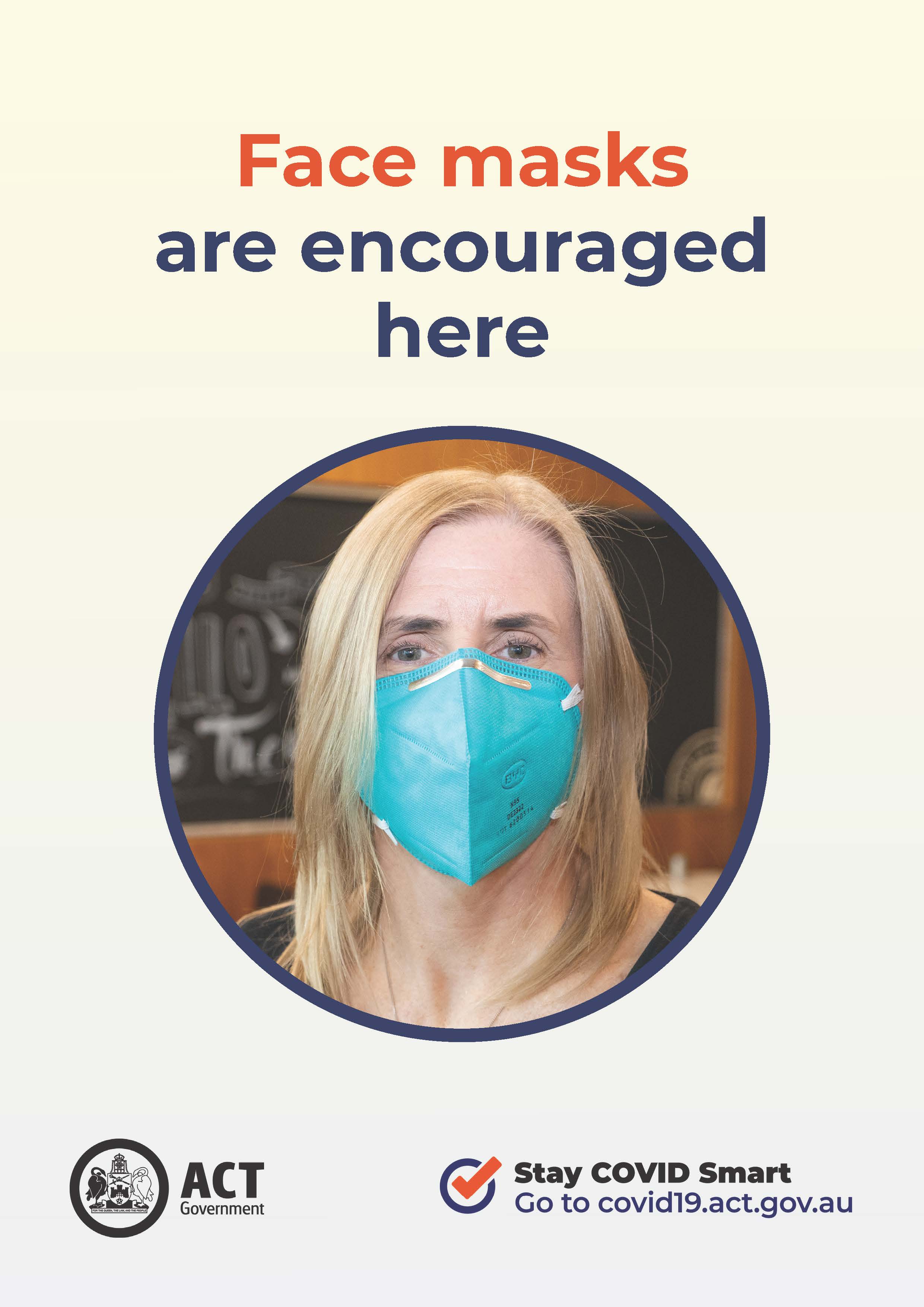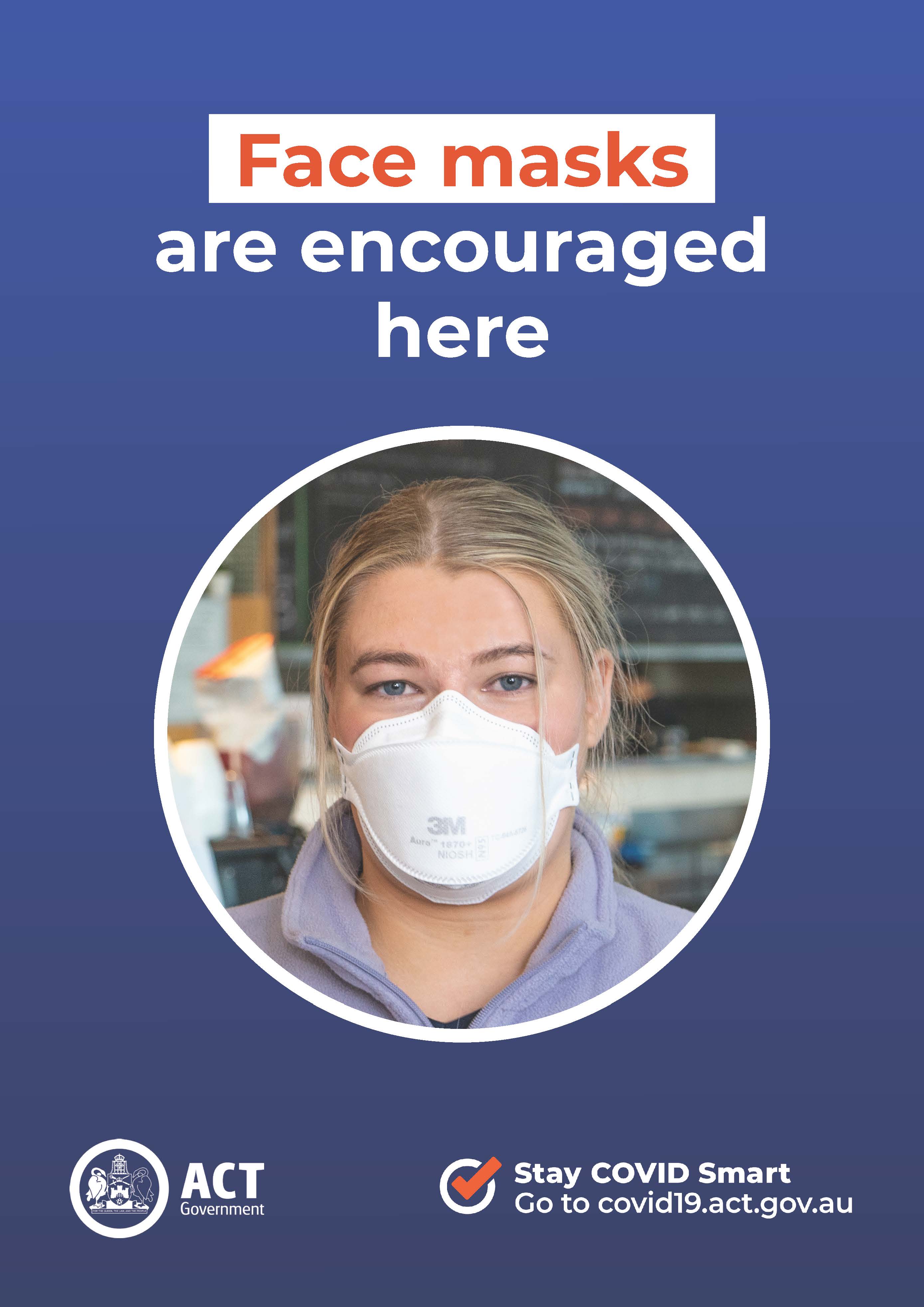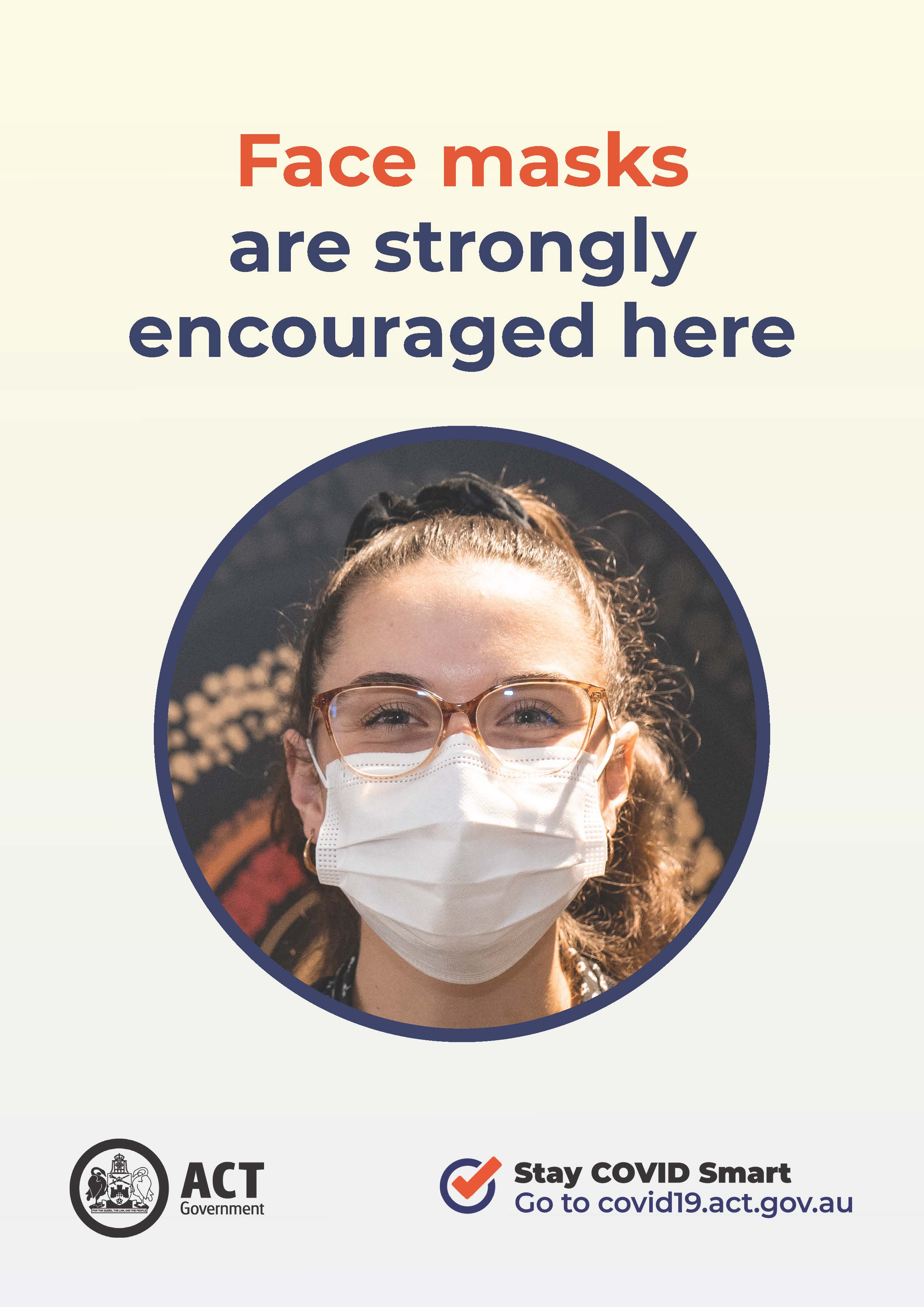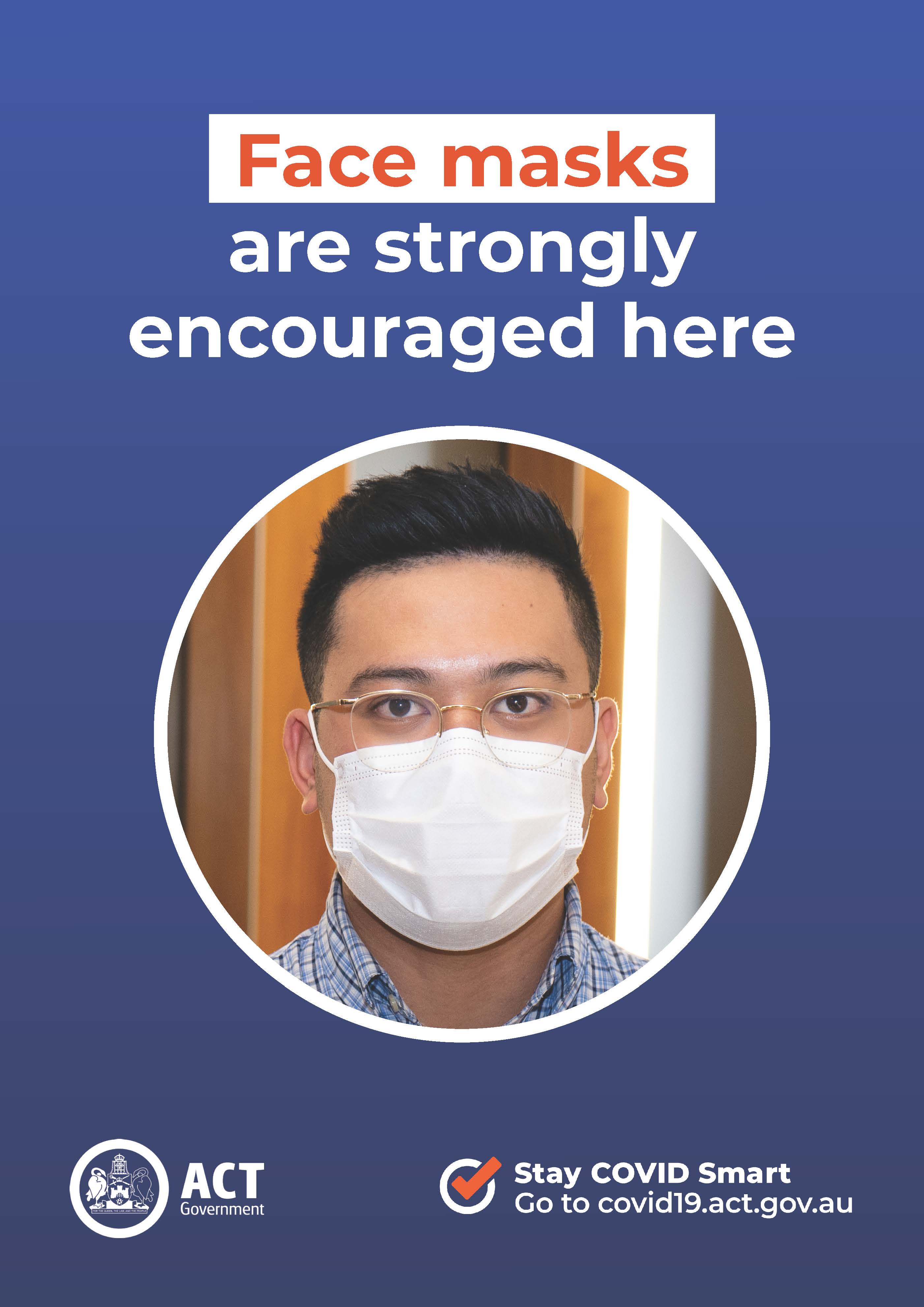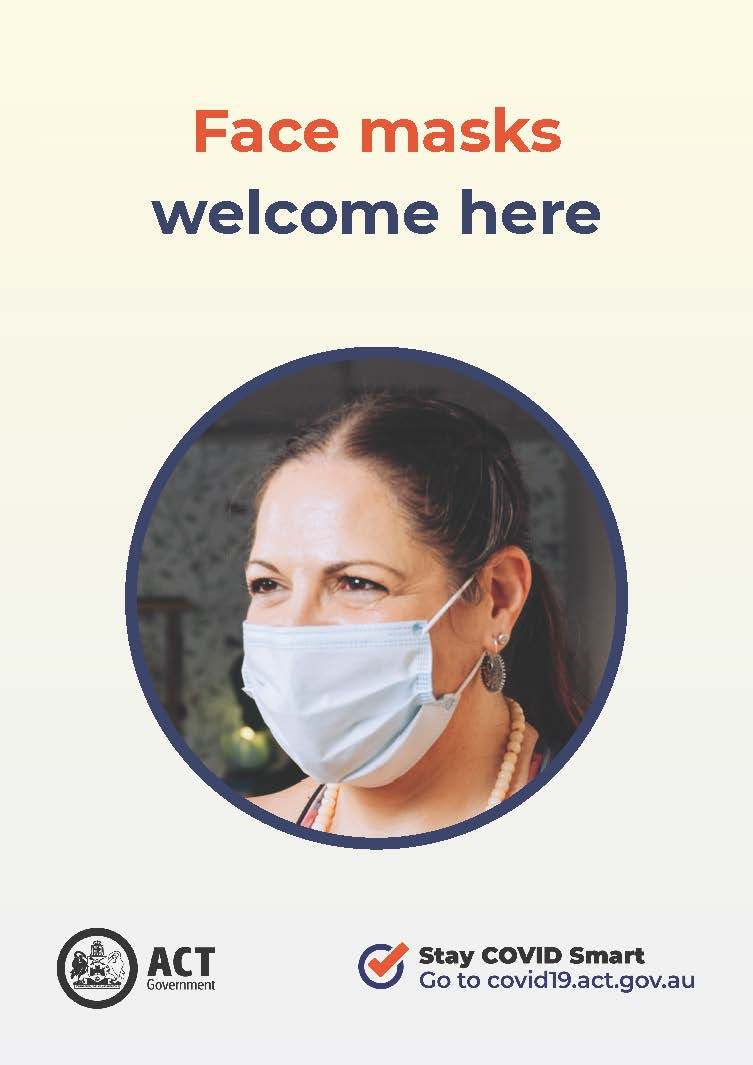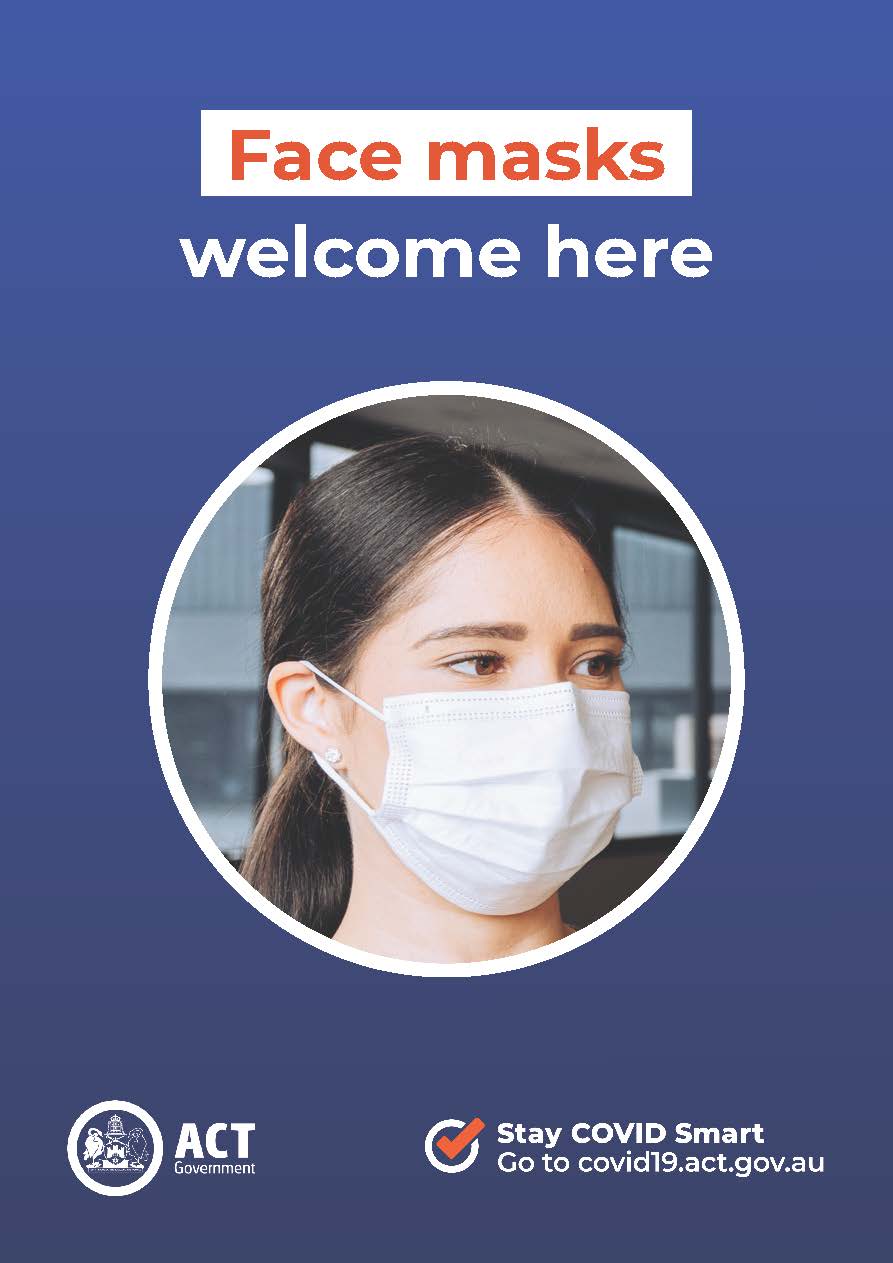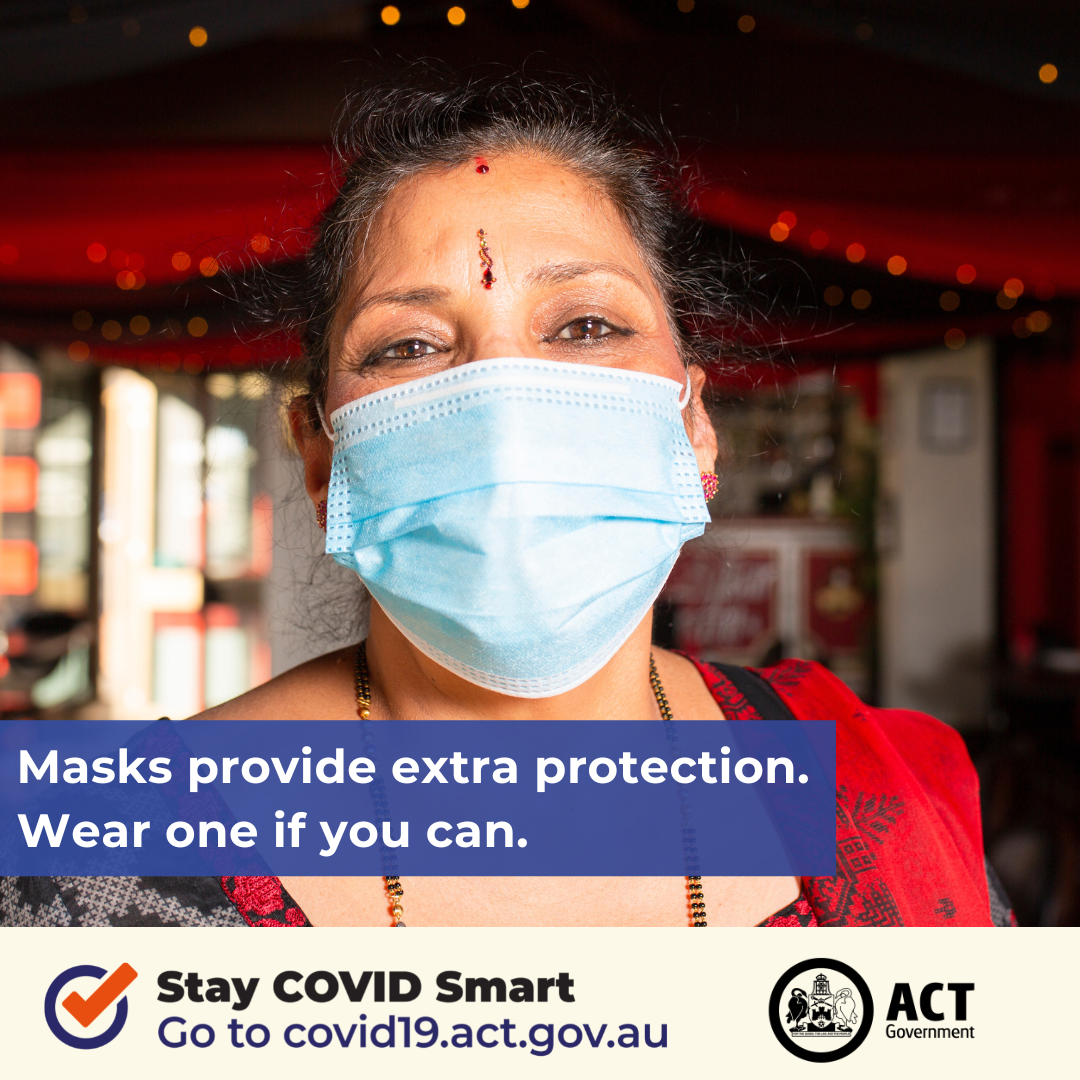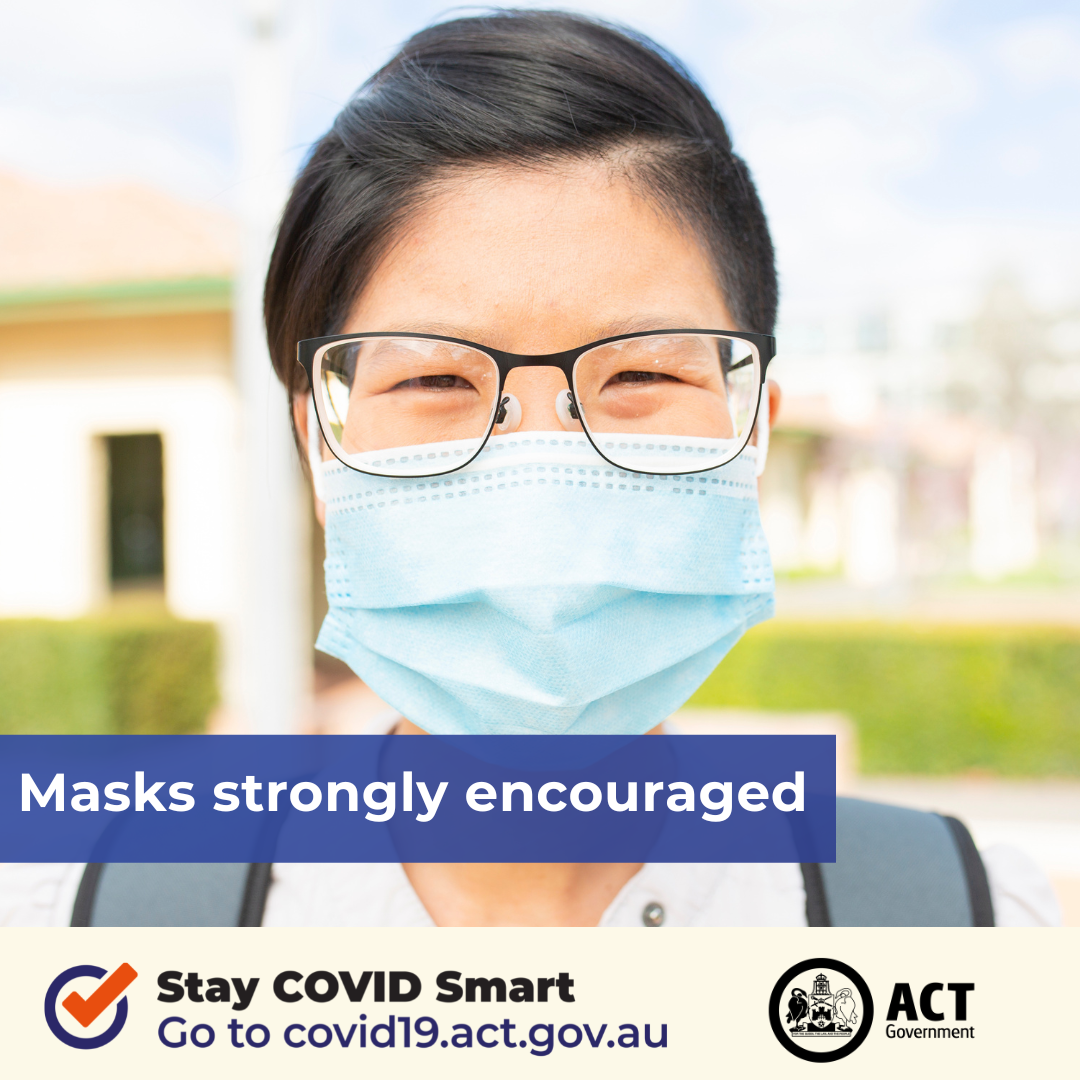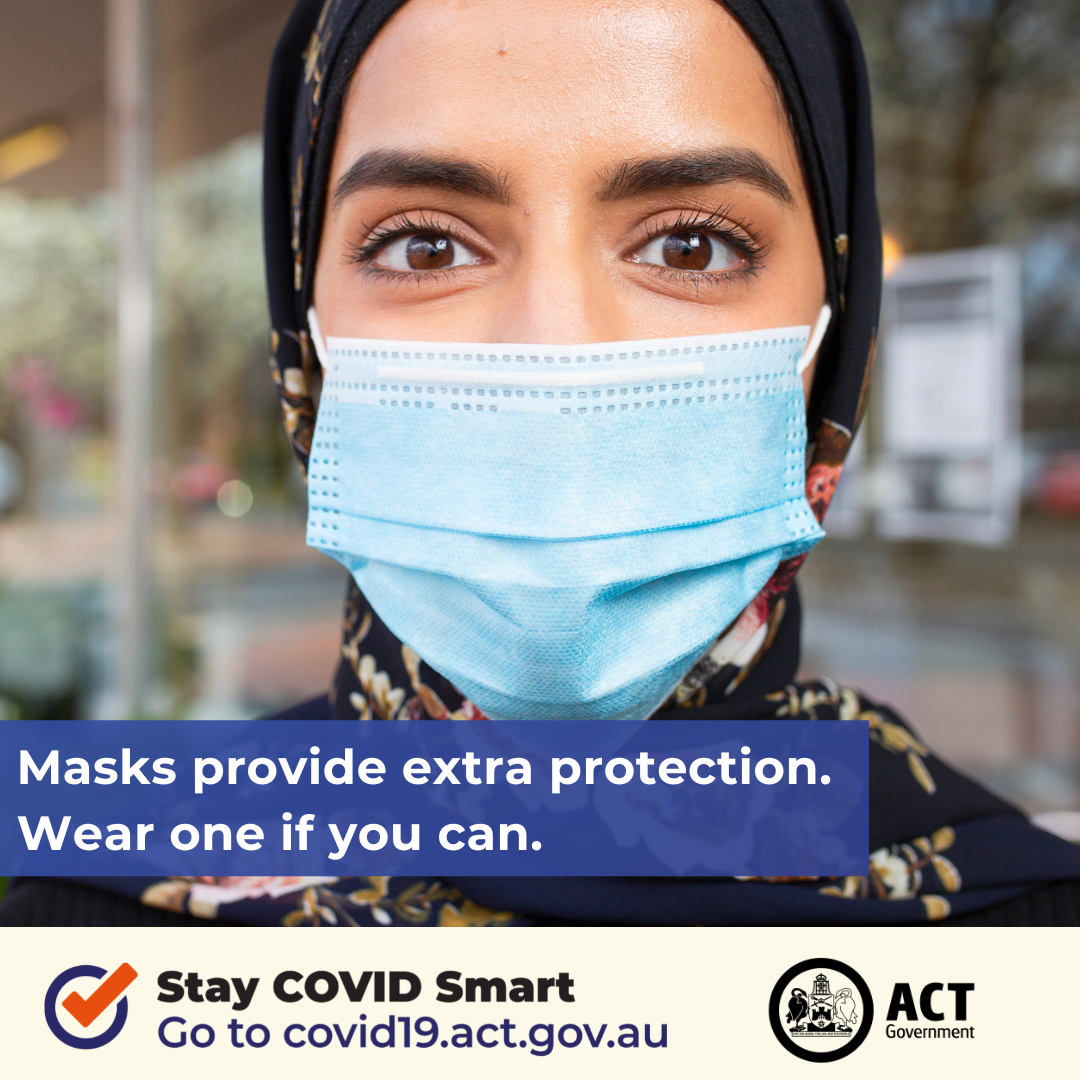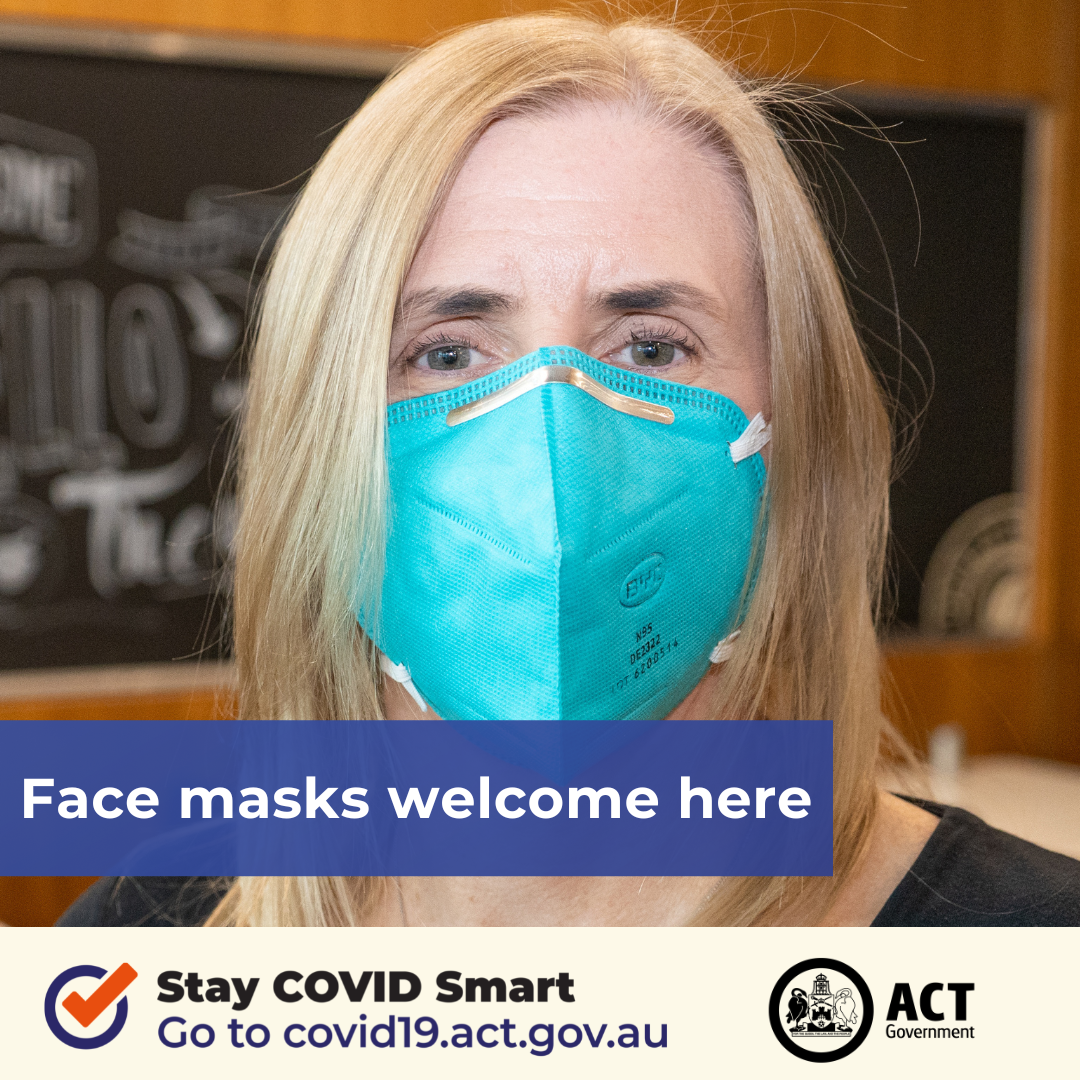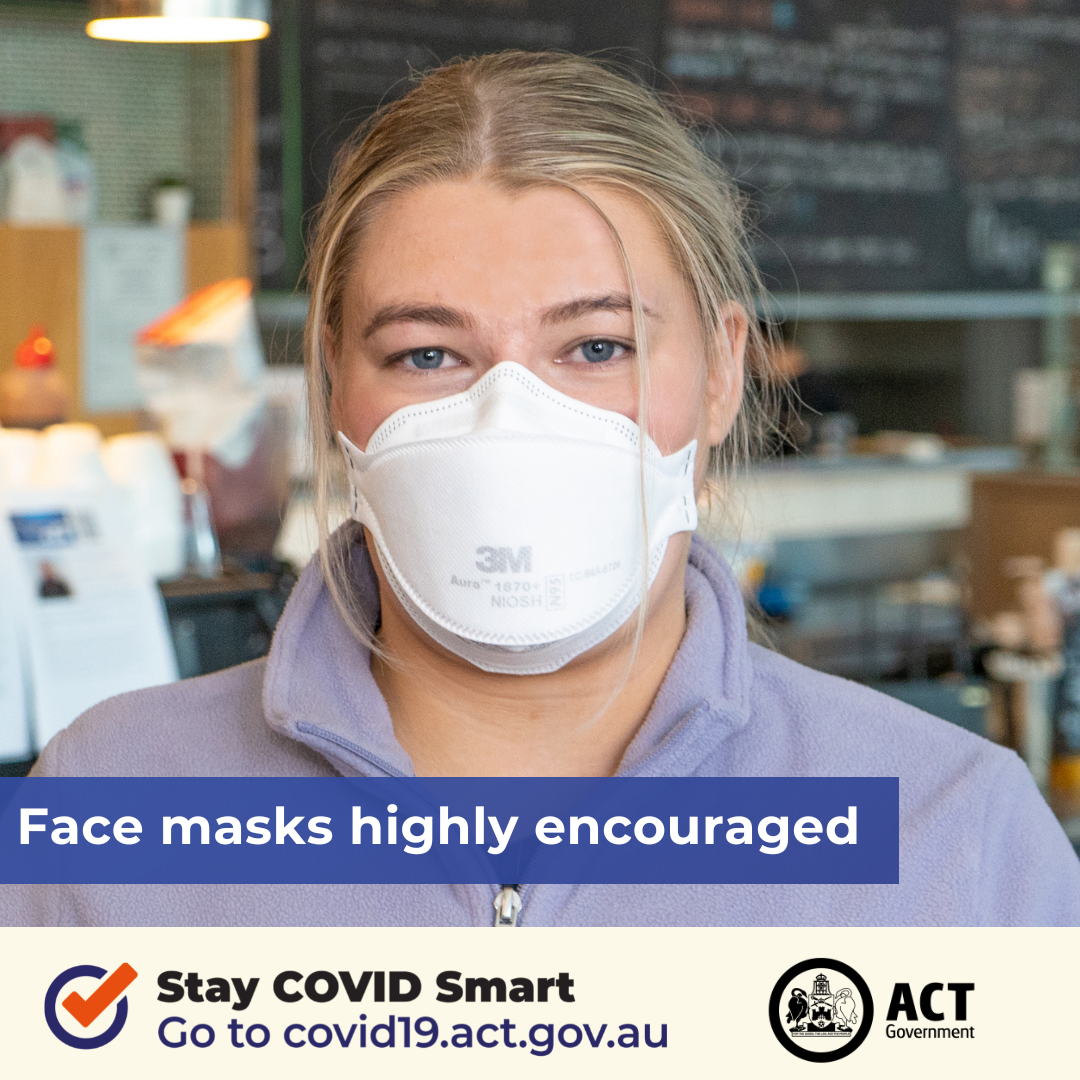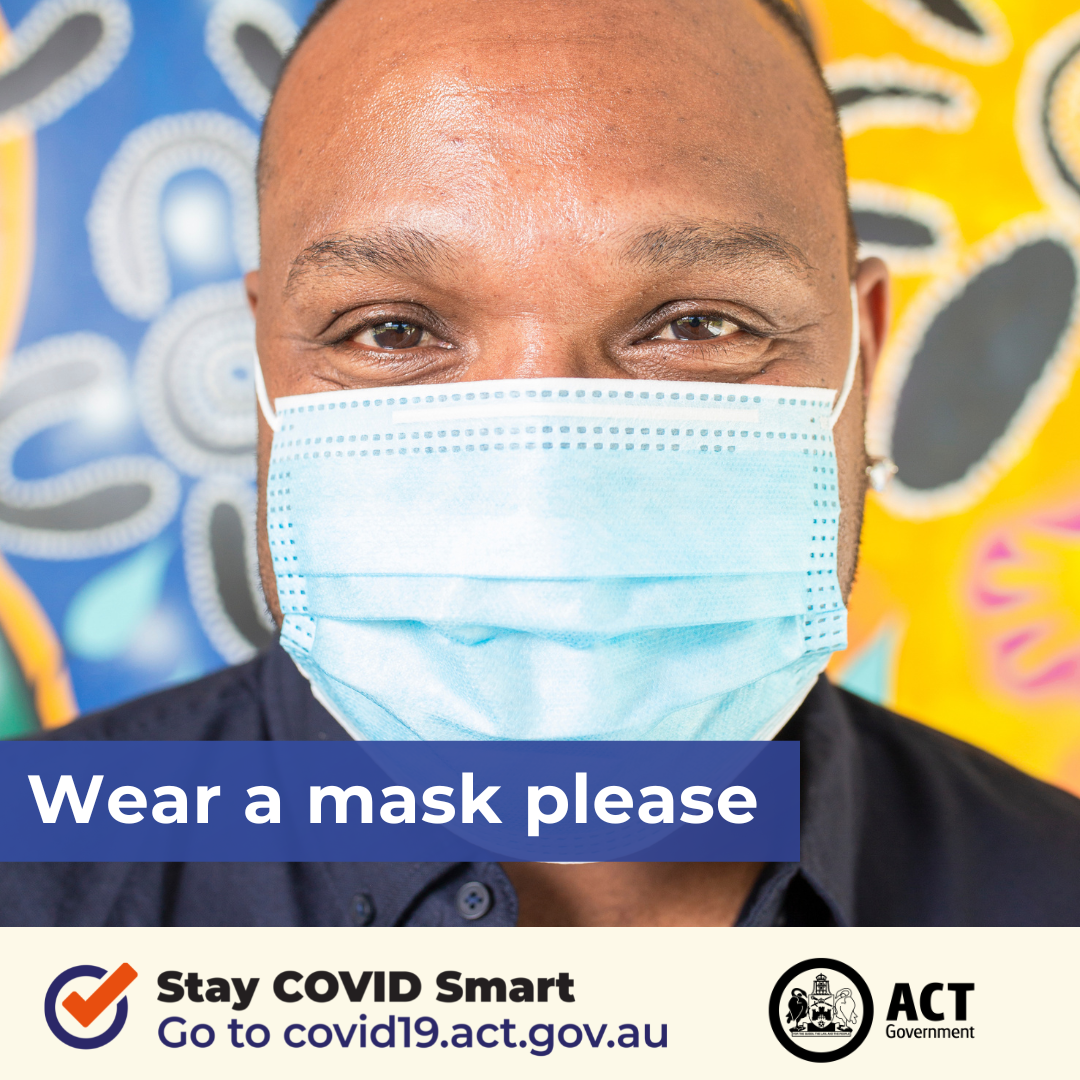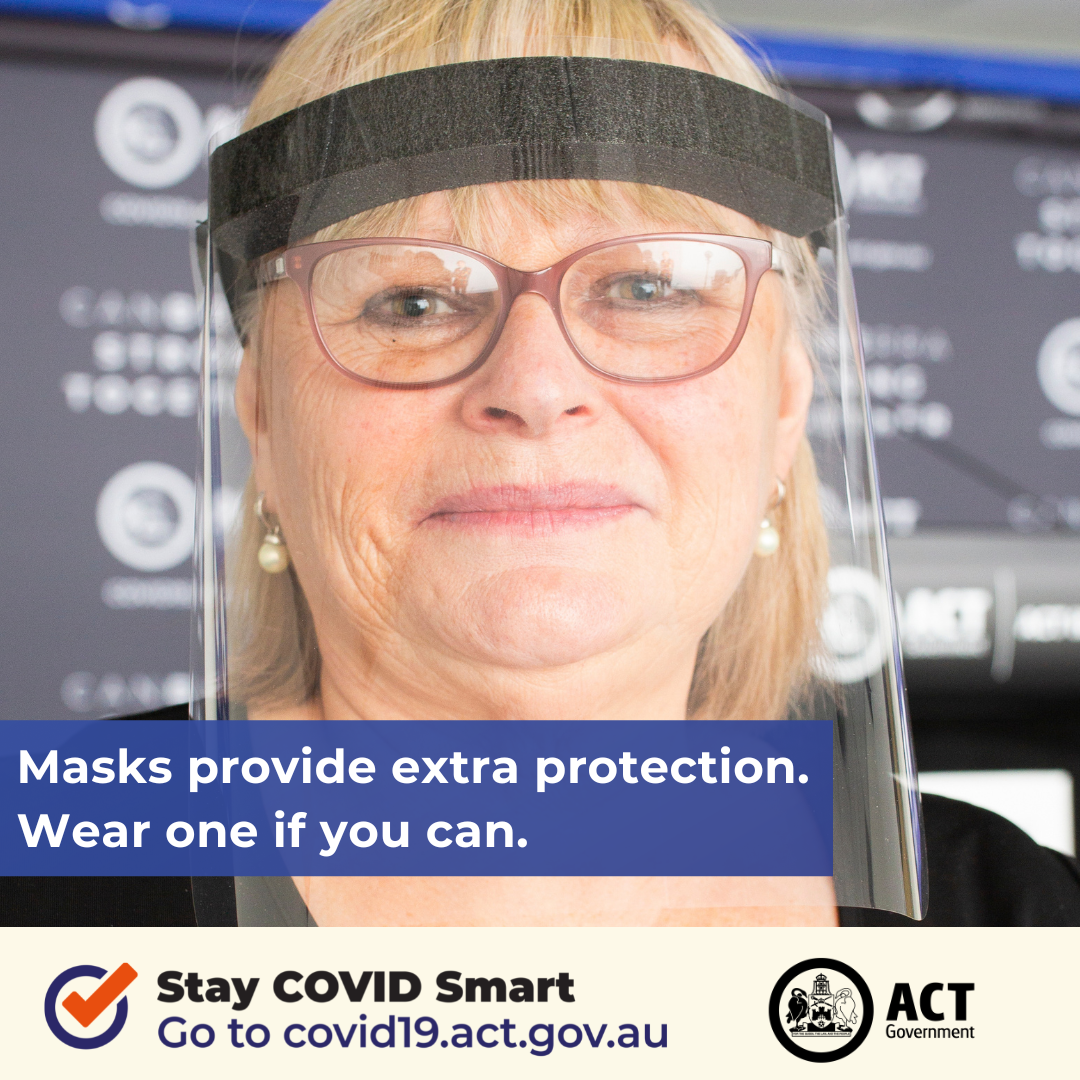Face masks have been an essential tool throughout the COVID-19 pandemic in stopping the spread of the virus.
Wearing a face mask can help protect you and those around you.
Face masks can stop viruses spreading in the air when you talk, cough, sneeze and laugh, which lowers your chance of spreading or catching the virus.
There are currently no facemask mandates in the ACT. However, some facilities may have their own policies that require staff or visitors to wear a facemask upon entry. This is for the protection of residents, who can be at high risk of severe disease from COVID-19.
Masks are strongly recommended in indoor public spaces for people who have tested positive to COVID-19 if they need to leave the home, and for household contacts of people with COVID-19.
Businesses and workplaces
Businesses and workplaces should ensure the work of the business does not put the health and safety of workers and others at risk.
Businesses should consider whether to implement mask wearing policies within their workplaces as part of their COVID Safety Plan.
A business may develop policies for employees, clients and visitors entering the premises to help meet Work Health and Safety laws.
This will be particularly relevant for all businesses and workplaces which employ staff in customer-facing roles to protect vulnerable people who must access these premises and services.
More information for businesses on considerations for keeping their business COVID Smart is available on the ACT Business Hub.
Types of face masks
Different types of face masks are available:
- cloth face mask
- surgical face mask
- P2/N95 respirator
Face masks can provide additional protection, particularly when measures like physical distancing are difficult to maintain. The effectiveness of face masks depends on the type of mask, and consistent and correct use.
Surgical masks or well fitting, triple-layered cloth masks are recommended for use by the general public when there is increased COVID-19 infection in the community, and if entering an indoor public setting where it could be difficult to maintain physical distancing.
Particulate filter respirators (PFRs), including P2/N95 respirators, are more effective than cloth and surgical masks at filtering very small particles such as viruses, and work best when worn with a tight seal to the face.
You may choose to wear a P2/N95 respirator to protect yourself when looking after a high-risk individual or to protect others if you have been identified as a high-risk contact. Where possible, physical distancing and other COVID Smart behaviours are still recommended even if a P2/N95 respirator is worn.
Further guidance on community face mask use by the national Infection Prevention and Control Expert Group is available on the Australian Government Department of Health and Aged Care website.
Fit your mask to your face
Always practise good hand hygiene – wash your hands with soap and water or alcohol-based sanitiser immediately before and after fitting your mask.
Make sure the face mask is fitted firmly to your face. To be effective, the mask must cover the nose, mouth and chin.
If your mask doesn’t fit your face well, air is likely to enter or escape through the gaps and will not be filtered.
When putting on your mask:
- pinch the top of the mask to fit the shape of your nose
- run your fingers across the top from the midline to the sides of the mask to ensure the shape of the mask fits well
- adjust the side elastic or ties to tighten the sides of the mask for a good fit
- the bottom edge of the mask should fit snuggly under your chin.
If you’re a health professional, follow the guidance of your workplace.
Fit check your mask before entry into any infectious zone. More information about fit-testing and fit-checking can be found on the NSW Clinical Excellence Commission website.
Tips for people who wear glasses
Make sure your mask is fitted properly, for more information see fit your mask to your face above.
Wipe your lenses before wearing them
Using an anti-fogging solution and microfiber cleaning cloth, or gently washing your lenses with soap and water (or shaving cream) before wearing them may help. This will keep water droplets from building up and fogging your lenses.
Adjust your glasses
Pushing your glasses forward on your nose will allow more air to circulate and keep your breath from fogging up your vision.
Rest your glasses over your face mask
Try pulling your mask up over your nose and rest your glasses on top of it. This will block the air from escaping and prevent fogging. If you try this, make sure your mask still fits properly over your face. Your nose and mouth should be completely covered, and there should be minimal air leaking from the edge of the mask when you breathe out.
How to wear your mask properly
How to safely wear and put on your mask
How to safely remove your mask
Bin your face mask correctly
When you’re finished with your single-use face masks, remember to dispose of them correctly too.
- remove your mask from the ear straps and don’t touch the front of the mask
- consider snipping your ear loops to protect wildlife
- when possible, place your used mask into a sealed bag to ensure others won’t touch it
- dispose of your mask immediately in the general waste bin, preferably a bin with a fitted lid
- wash your hands (or use hand sanitiser if soap and water is unavailable)
Please don’t dispose of your masks in recycling, as single-use face masks contain soft plastics which can’t be recycled.

